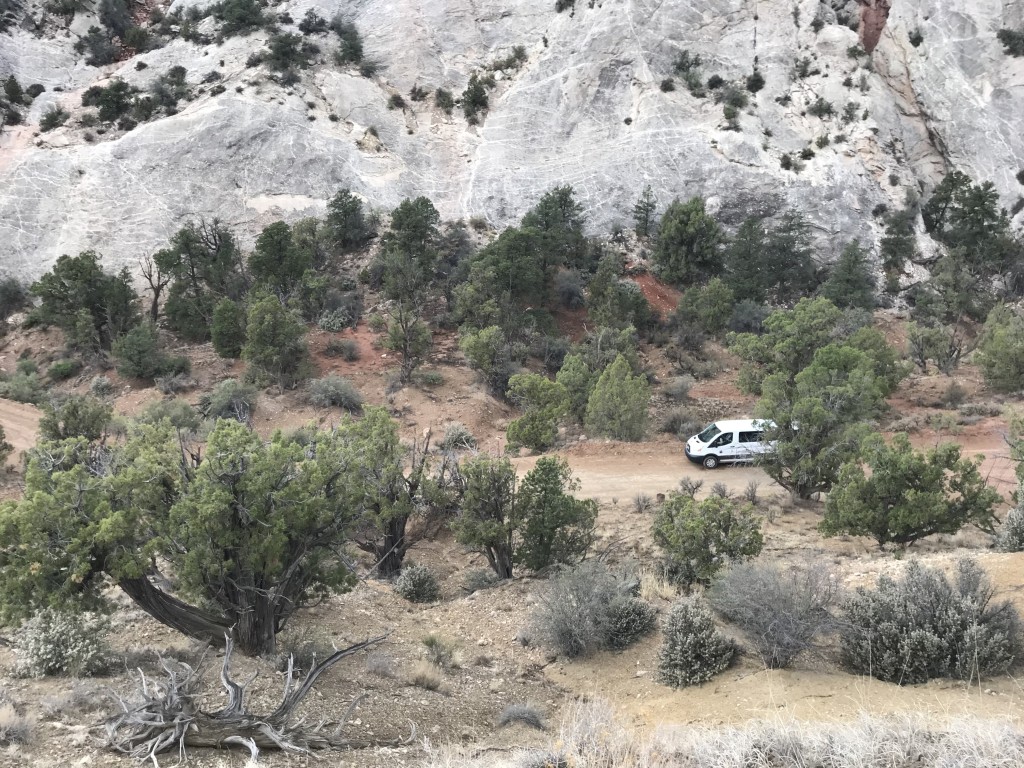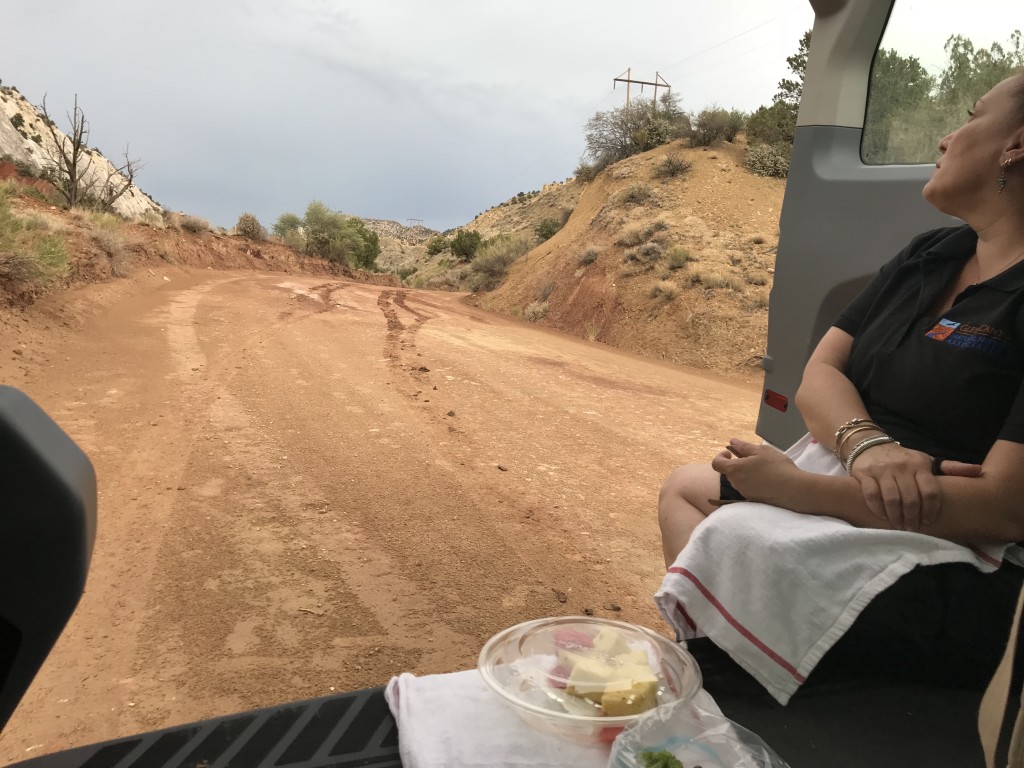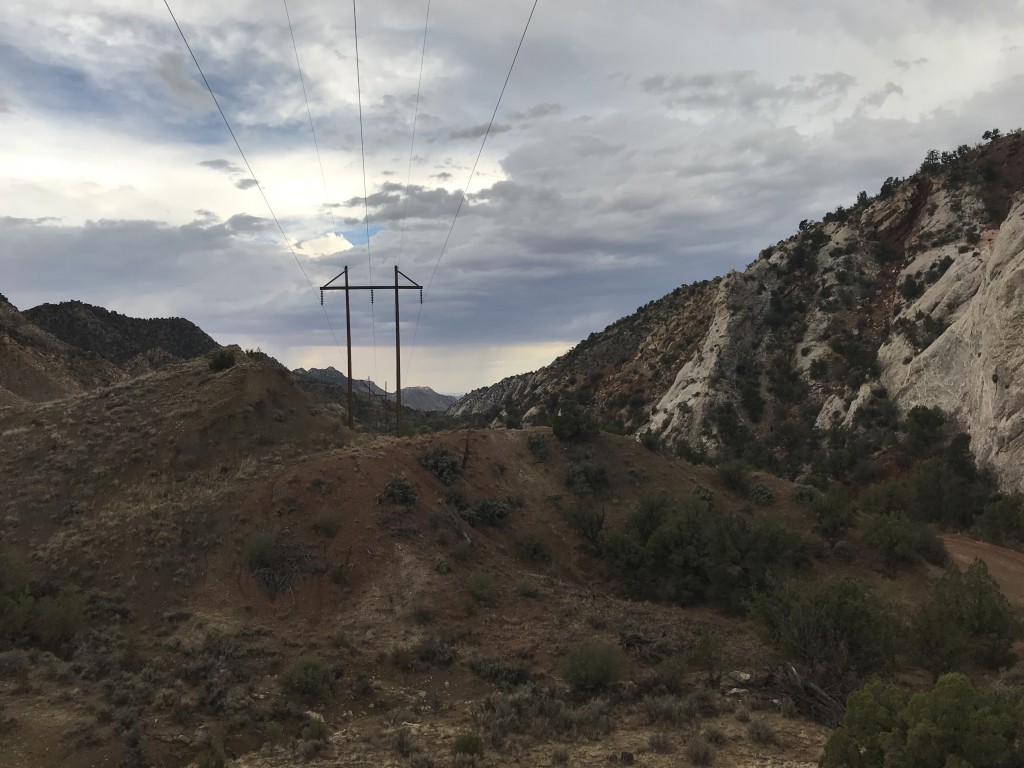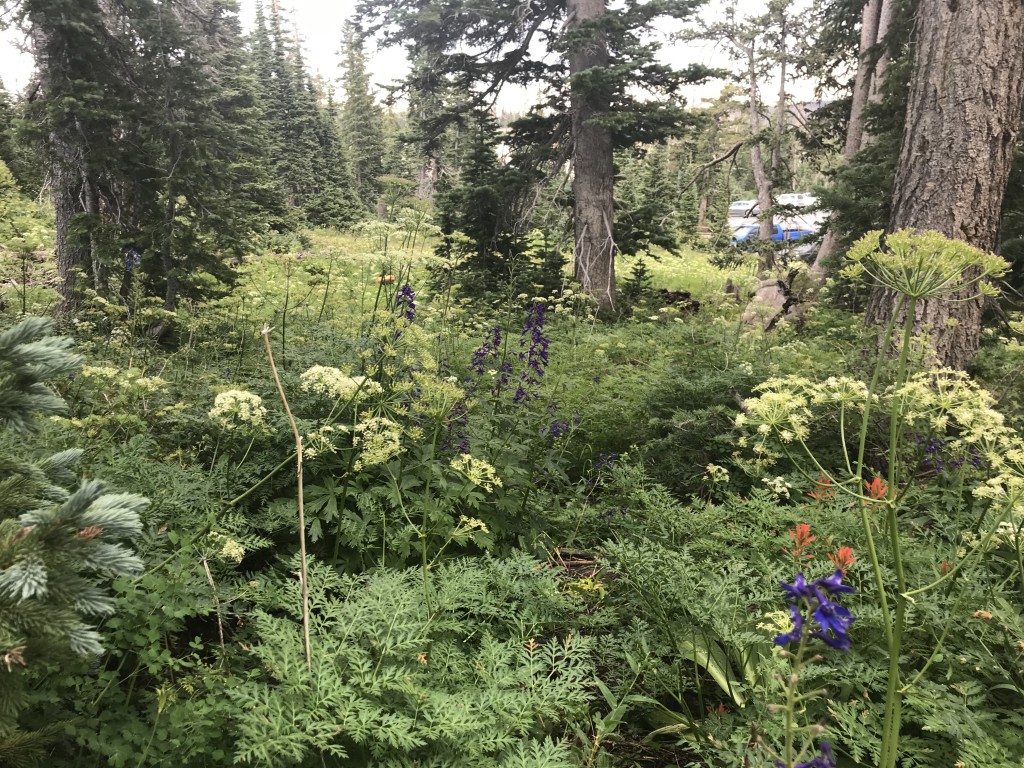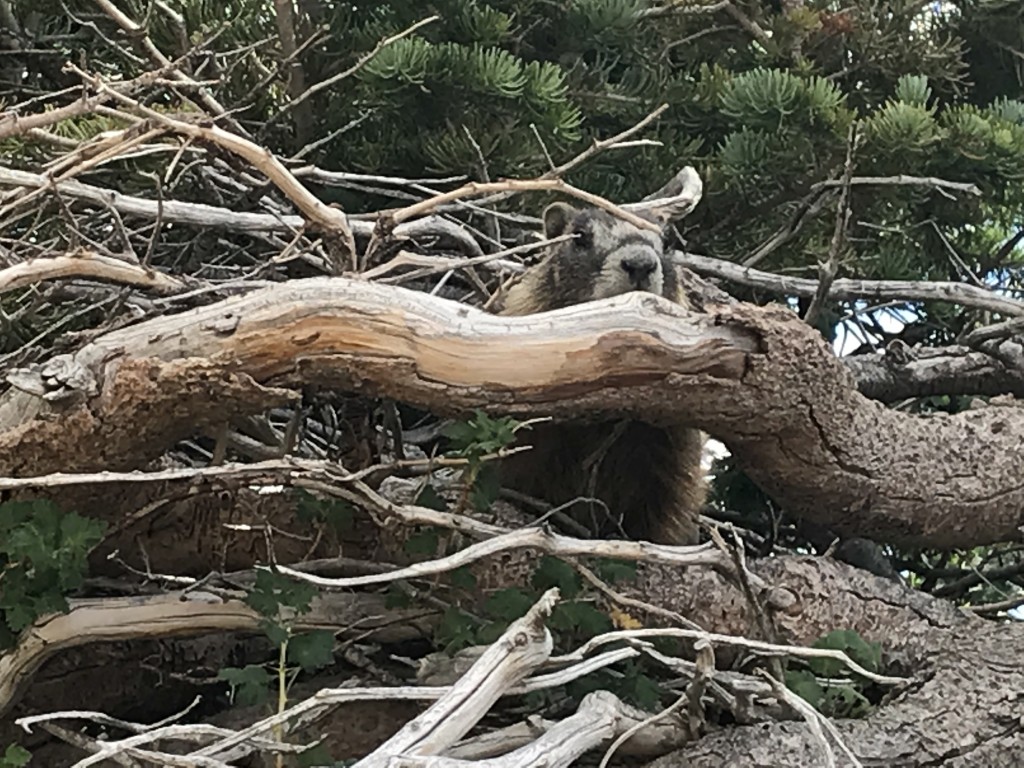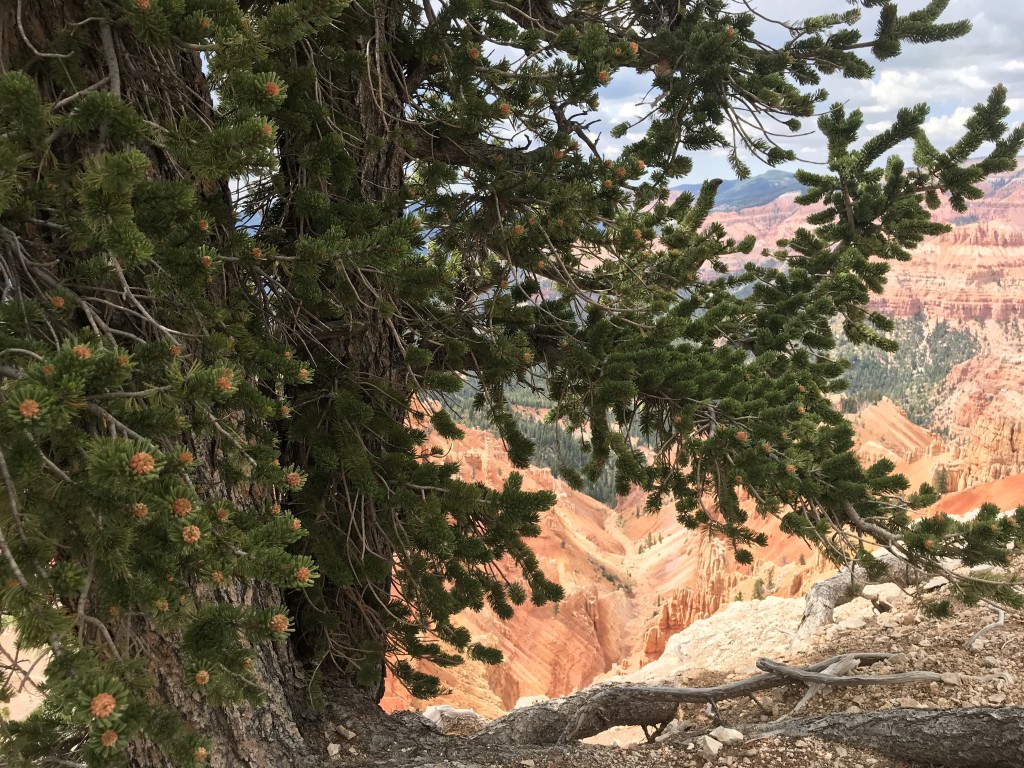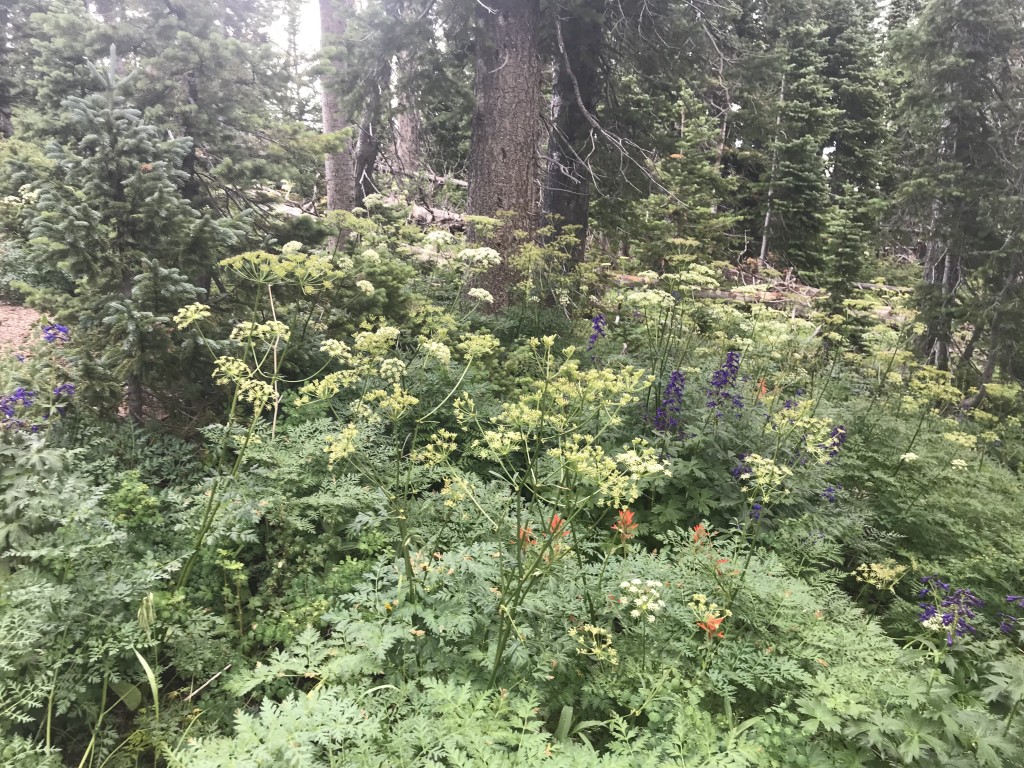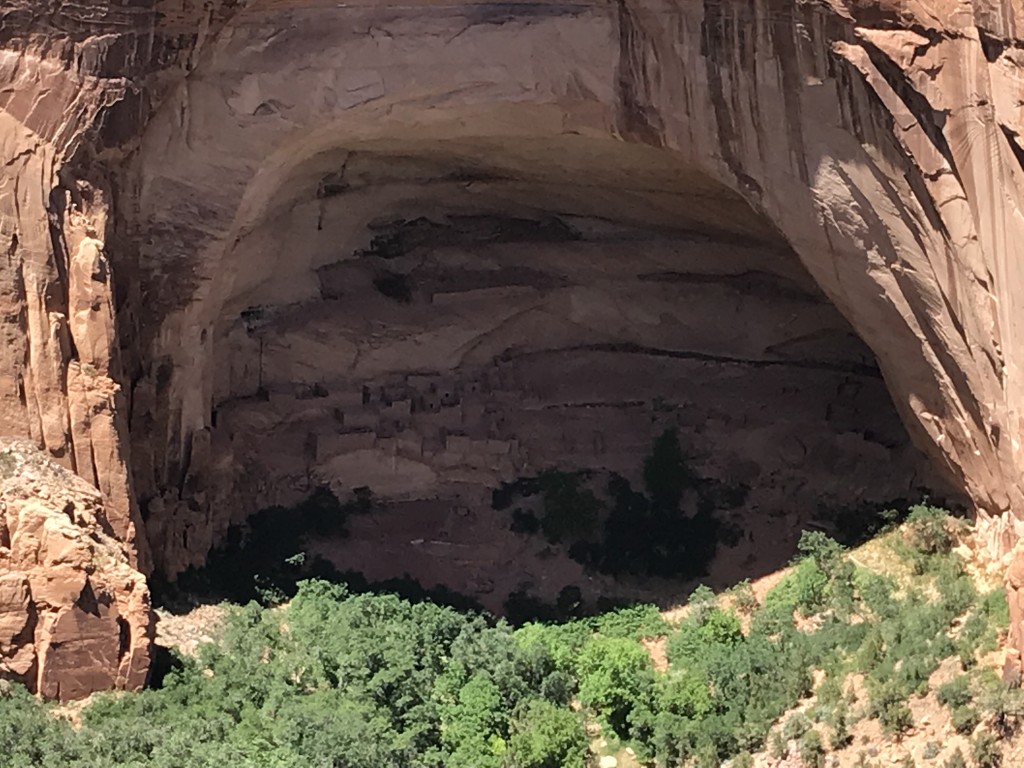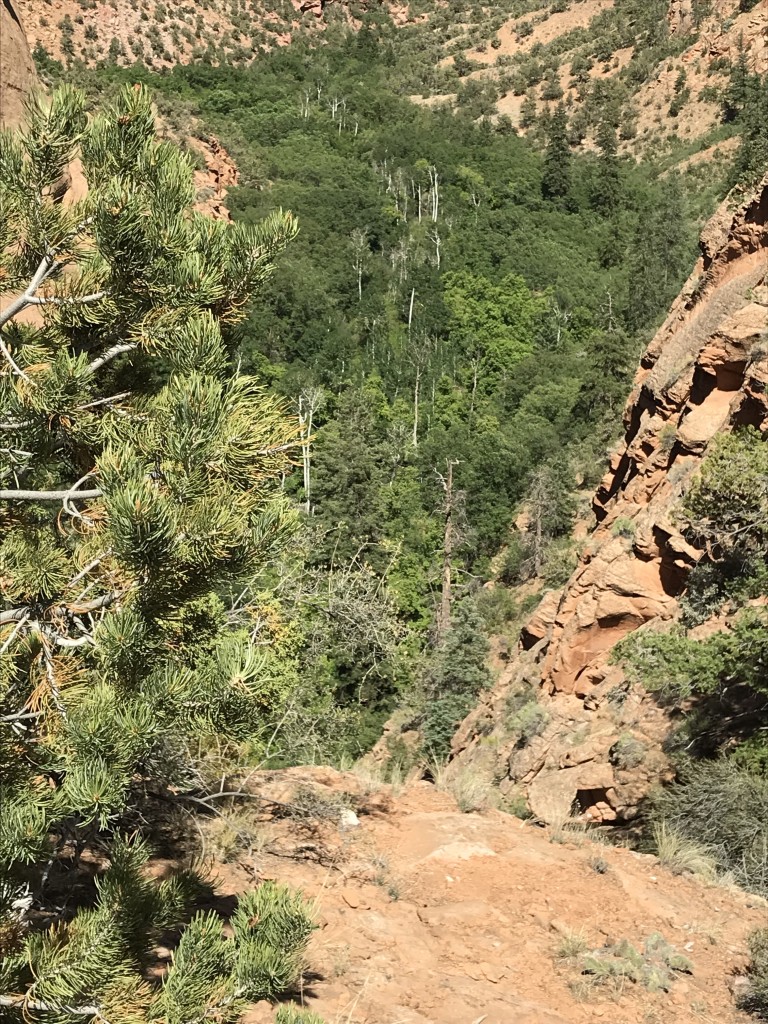I worked on Saturday. It was not my sixth day of work because I did have actual Fourth of July off.
I seized an opportunity to take our customer service specialist, Brandice, and make a Cannonville / Escalante delivery and introduce her around. For efficiency and beauty, we took Cottonwood Canyon Road full-well knowing we would probably need to return via the highway due to gathering clouds.
It rained while we were in Escalante. But when we returned through Cannonville, the skies, ground and roadways were dry and there was a sunny path of blue sky down Cottonwood Canyon. Knowing from experience it would put us home 40 minutes earlier, we took it.
To give some perspective, Google says it is 160 miles Page to Cannonville via the paved highway and 46 miles via Cottonwood Canyon – albeit slow going and winding dirt road.
We exited the paved road south of Cannonville at Kodachrome State Park and proceeded 18 more miles to pass the turnoff for Grosvenor Arch. So far, so good. A couple raindrops hit the windshield. Bear in mind, we are already more than 20 miles in for a trip we believe is 46 slow miles – oh wait – now they tell me it is 56 miles – from Grosvenor to highway 89. Anyway, we went UP the washboardy hills and UP more washboardy hills and then descended into an area nick-named “Candyland” because of the colorful rock formations. It was beautiful. But then, the descent down the slightly rained on slope was slick. Moreover, it stuck to the new tires like clay, making them perform like bald tires. We slid sideways in the 15 – passenger van. There was a slight but muddy ravine on our right. Enough! We knew we would have to stop and wait this out. Typically the road dries out fast – by the next day. It was six pm. We were expected home.
When it stopped raining, I climbed to the top of the nearest steep and muddy hill until I got one bar of cell service. I texted the boss. No immediate answer. I called the boss. He picked up on the fourth ring. Can you back up north? He asked. No. The dark rain clouds had now cut us off behind.
I’d love to say I’ll be there in 90 minutes, he said, but I am at Antelope Point (ten miles the other side of town) and I’ll have to go by home and get my rescue equipment.
Can you call Brandice’s husband and let him know? I asked. Affirmative. Text me the phone number.
Brandice shouted me the number from the distant van. I slid back down the hill and we enjoyed a nice tailgate repast of veggies, fruit and guac. I hiked back up the hill to see if there were further messages. Nada. But, the road looked pretty good from that vantage point. While I was hiking, Brandice had been busy peeling mud from the tires with a sharp rock. We began inching our way down the road in 200-yard segments. Here is how it worked:
I ran ahead to reconnoiter and then signal Brandice forward to a specific place. As she drew near, I ran ahead once more to see if all was safe around the corner. In this way, we avoided sinkholes and slippery narrow slopes. Sometimes we waited 15 or 20 minutes for the road to dry out.
Meanwhile, the boss texted his location. He was now on the dirt road. His pathway was dry. For several miles. Then he hit the muddy, fish-tailing mid-section.
By the time the Martins came over the hill we had made a few miles progress in the van. Yes. Martin plural. When the boss Martin met us, who should pop out his passenger door but Martin the husband of Brandice? Two shovels and a garden hoe made quick work of clay removal from the tires.
Being the grown-up boy scout, WFR and general all around MacGyver that he is, the boss leap-frogged van and Trooper through the sketchy places while I picked up slack on the passable. We made it home by 10:00 pm.
Aside from the embarrassment of having to call for help, I had a fabulous adventure in a beautiful place. You see, the clouds and rain made it a glorious temperature for hiking – up the hill for a cell signal and up and down the road for blazing a trail – in one of the most beautiful places of this region.
Unexpectedly, I got my much-desired, long Saturday hike.
But, still and all, I have a new rule for myself: No dirt road driving when there is rain anywhere in the state. – – Until we get knobbier tires on the van.
